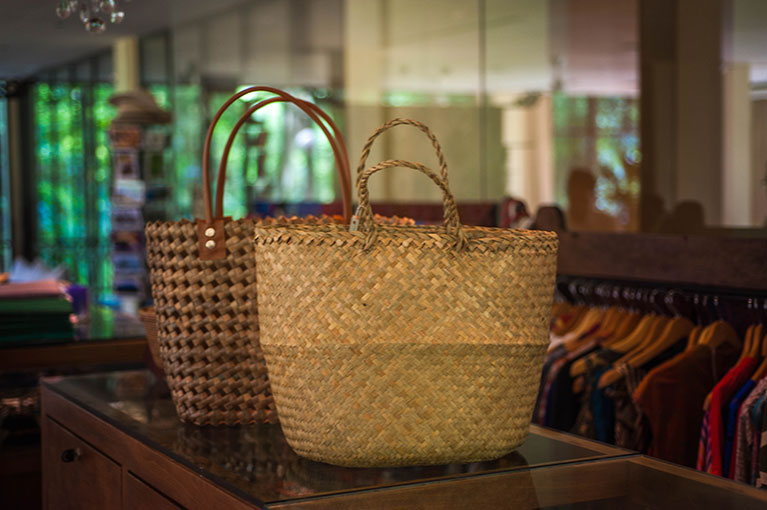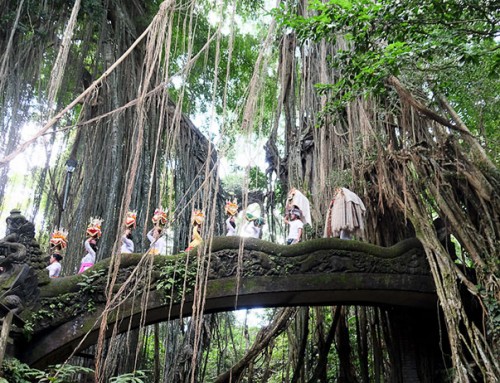Human beings live from their creativity, and the Balinese are famously creative. The fascination of handicrafts is seeing what someone can make from the surrounding natural materials. Take for example Bali’s famous woven bags, made of pandanus, or pandan, leaves.
To transform pandan leaves into a stylish bag takes a lot of effort and skill. There are many steps in the process. First, the harvested pandan leaves are cleaned and the thorns are removed. The cleaned pandan leaves then are cut into the preferred size, around one to three centimeters wide. The cut leaves are boiled for about 30 minutes to get rid of the sap, then they are dried without sunlight to avoid the leaves rolling up. After being left for six hours, the leaves are soaked in plain water for another four hours. Then they go through a whitening process by drying in the sun. After this, the pandan leaves may be colored as requested. Then they are woven into the preferred pattern.
If you visit Bali and walk around its art markets, you will see woven bags in a great variety of shape, size, and material.
The pandanus woven bag comes in various sizes and thus varies in price. Smaller bags are around IDR 100,000 to 200,000; medium size will be up to IDR 350,000, with larger bags above IDR 350,000. However, if you are shopping in the art market, just show your bargaining skills — you may get a better price.
The pandanus woven bag is also available at the Komaneka Boutique within each resort.













Leave A Comment